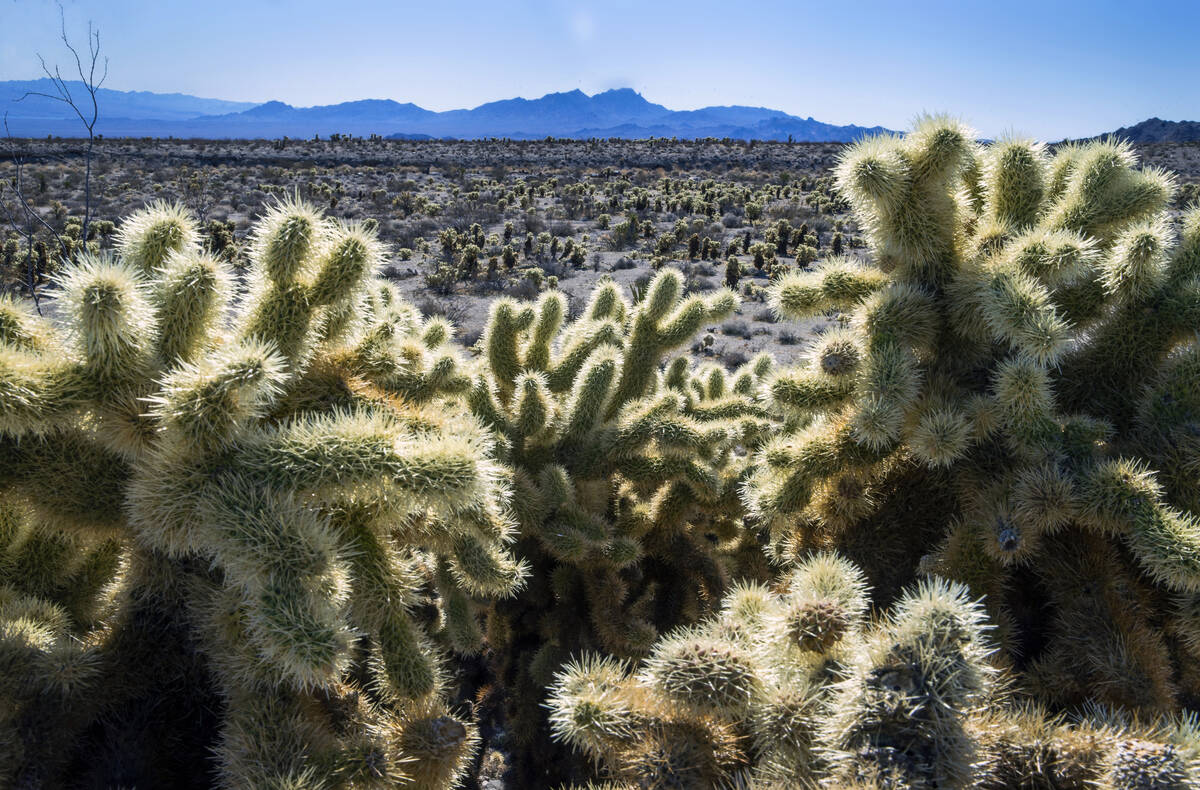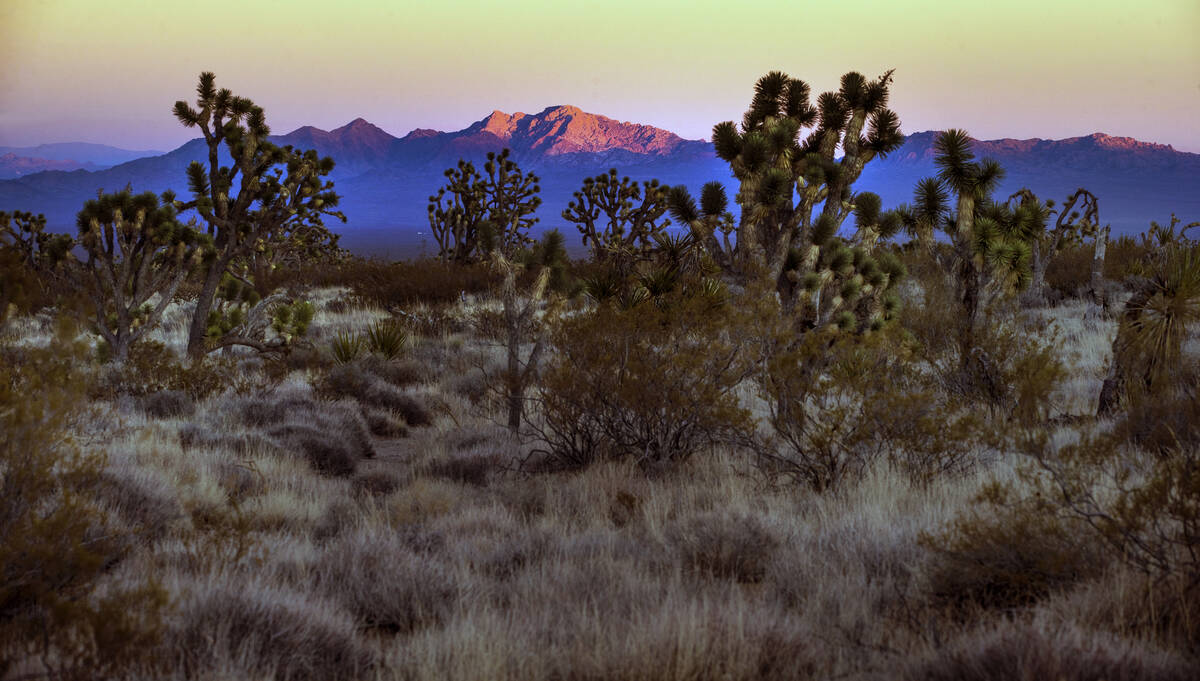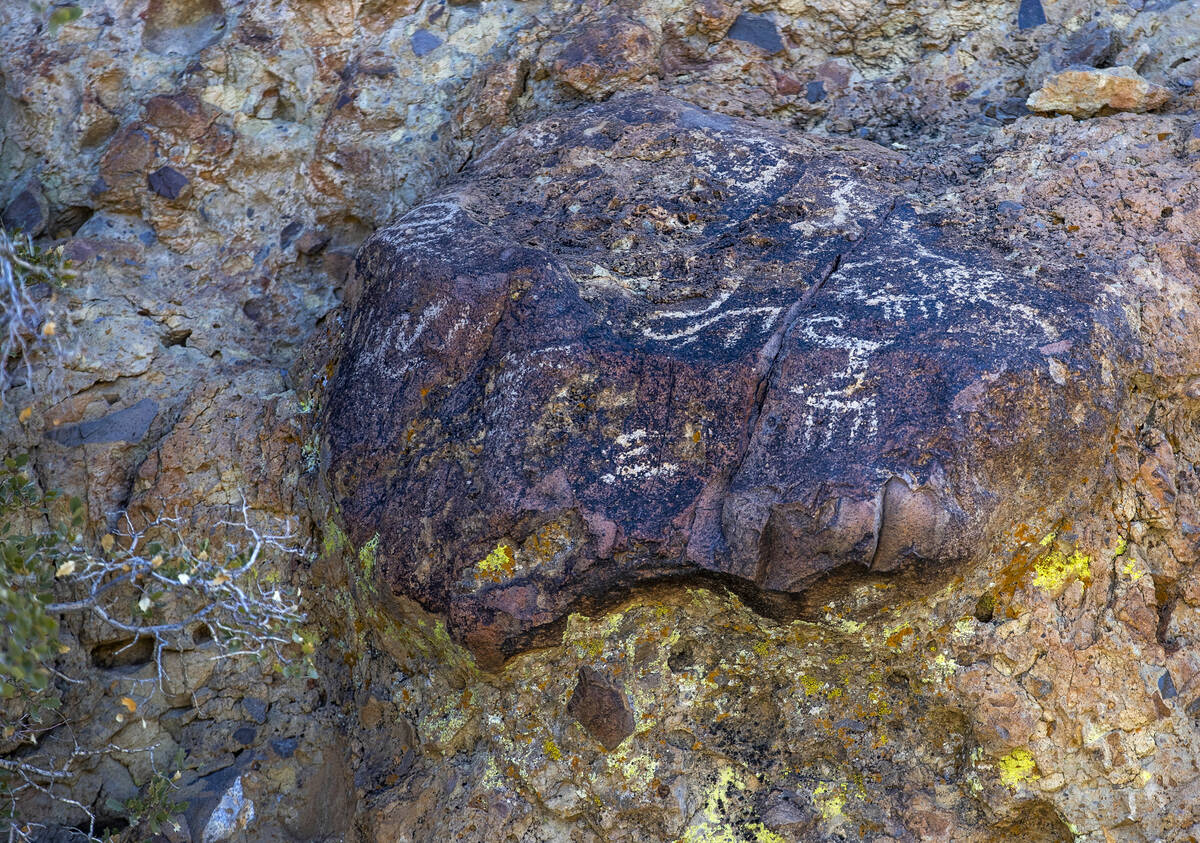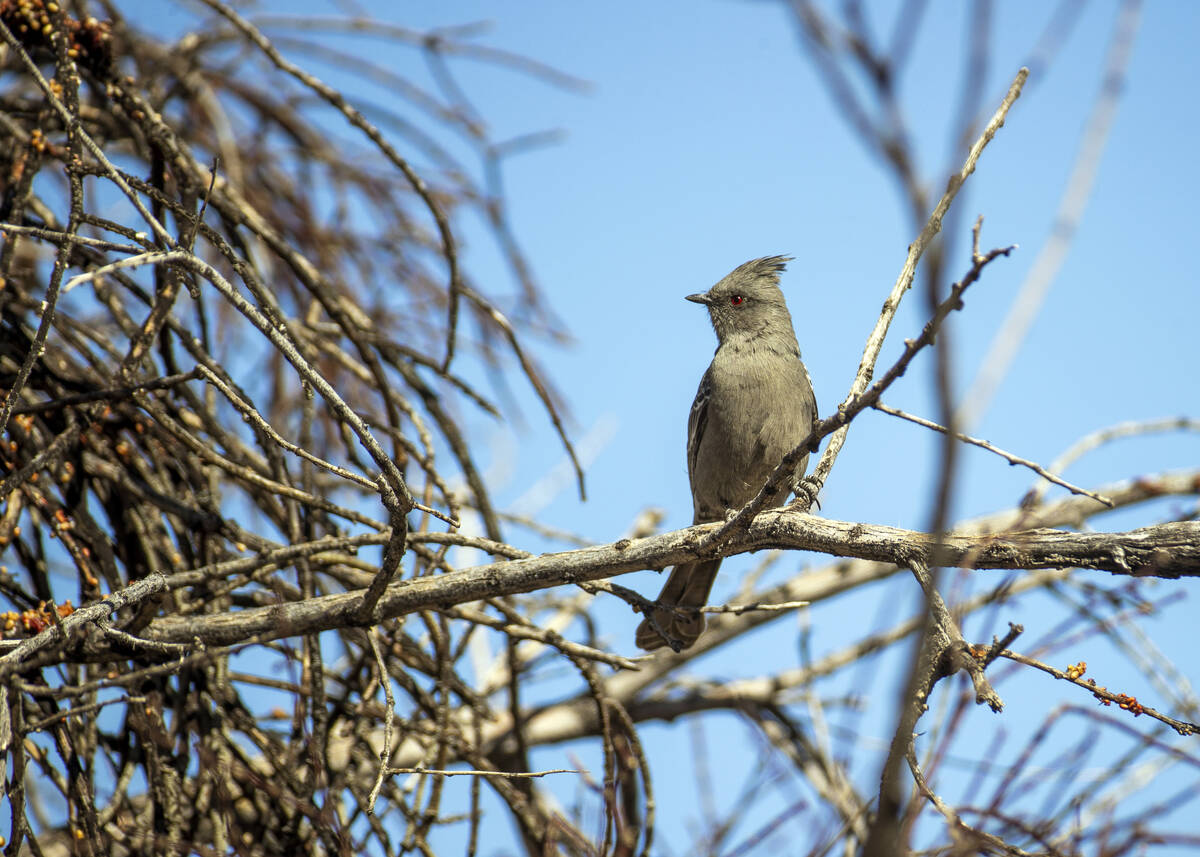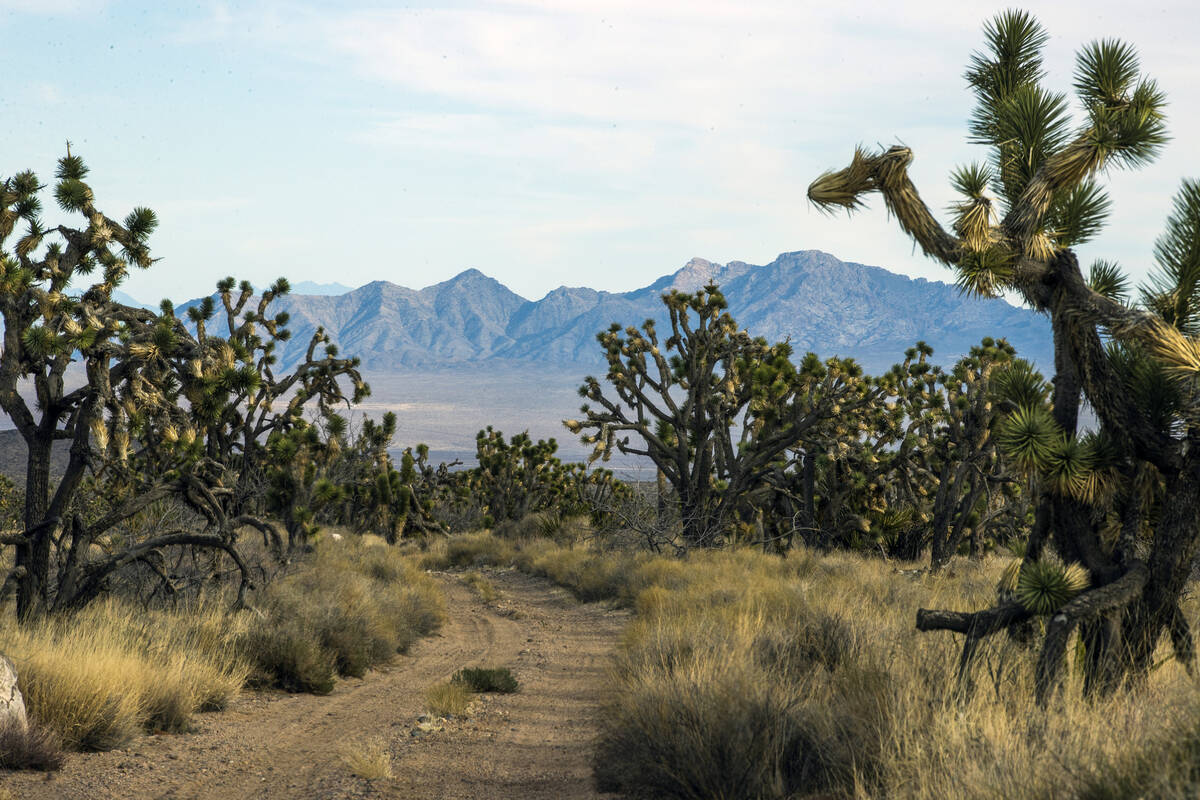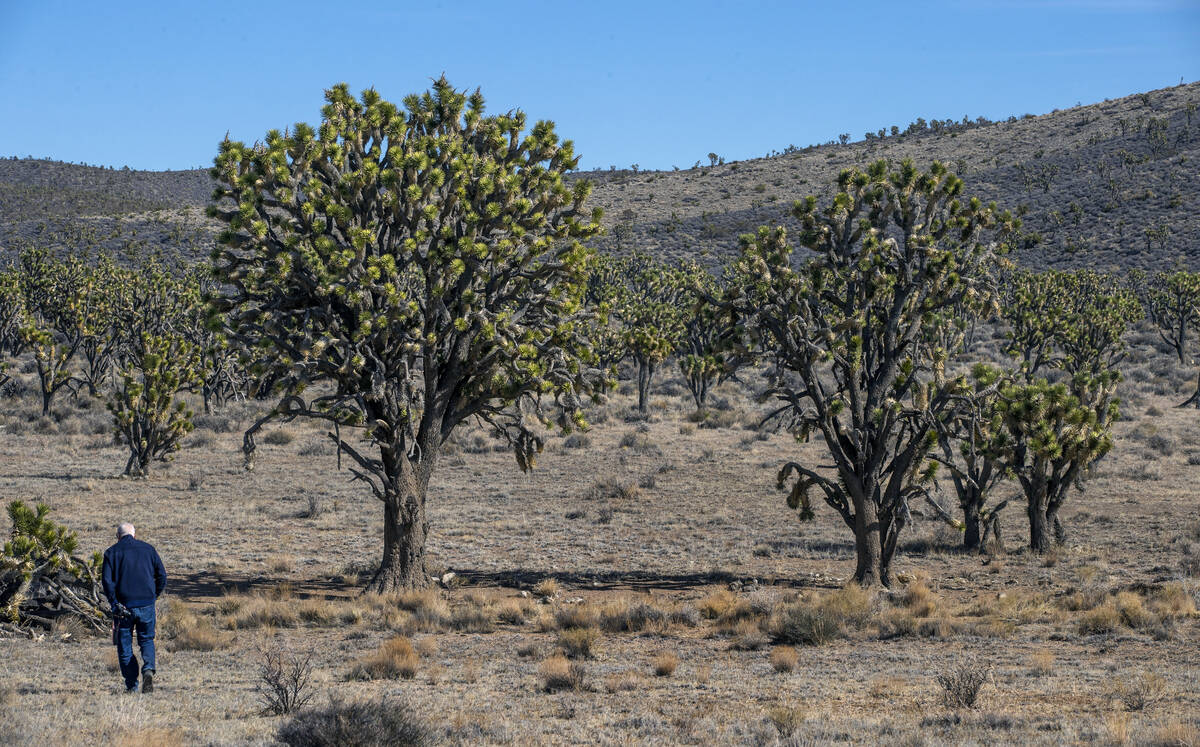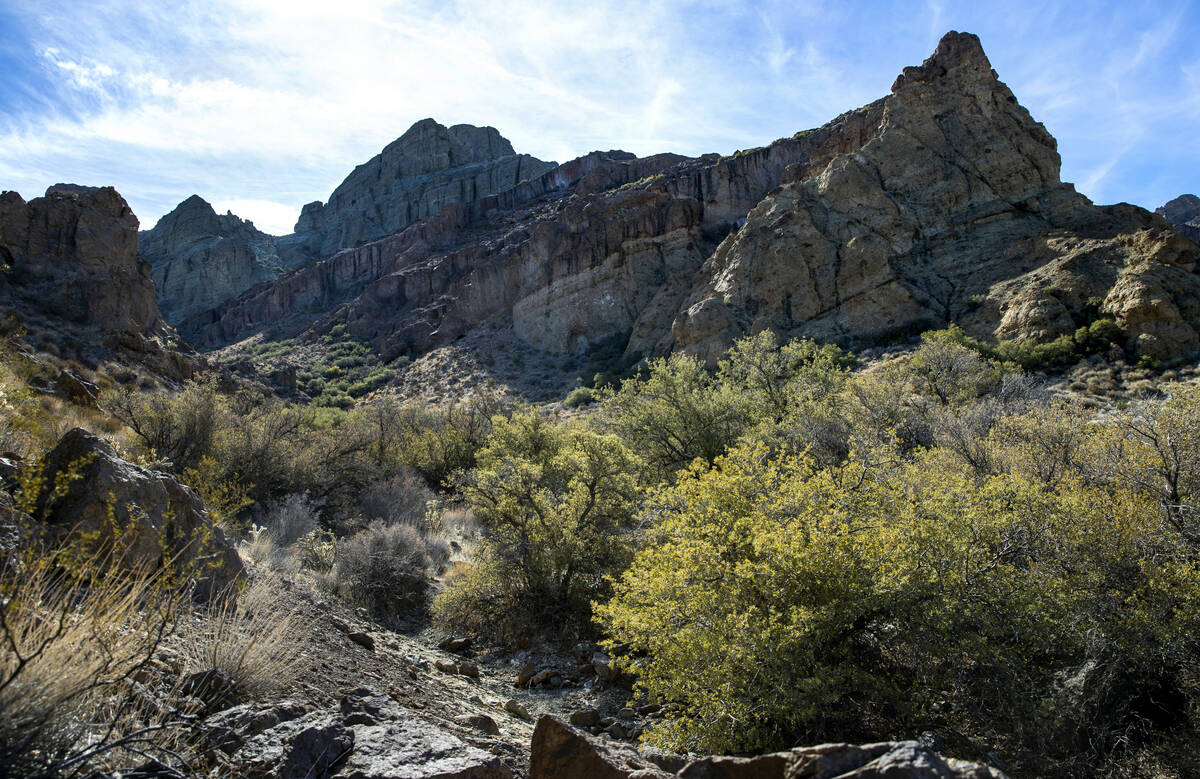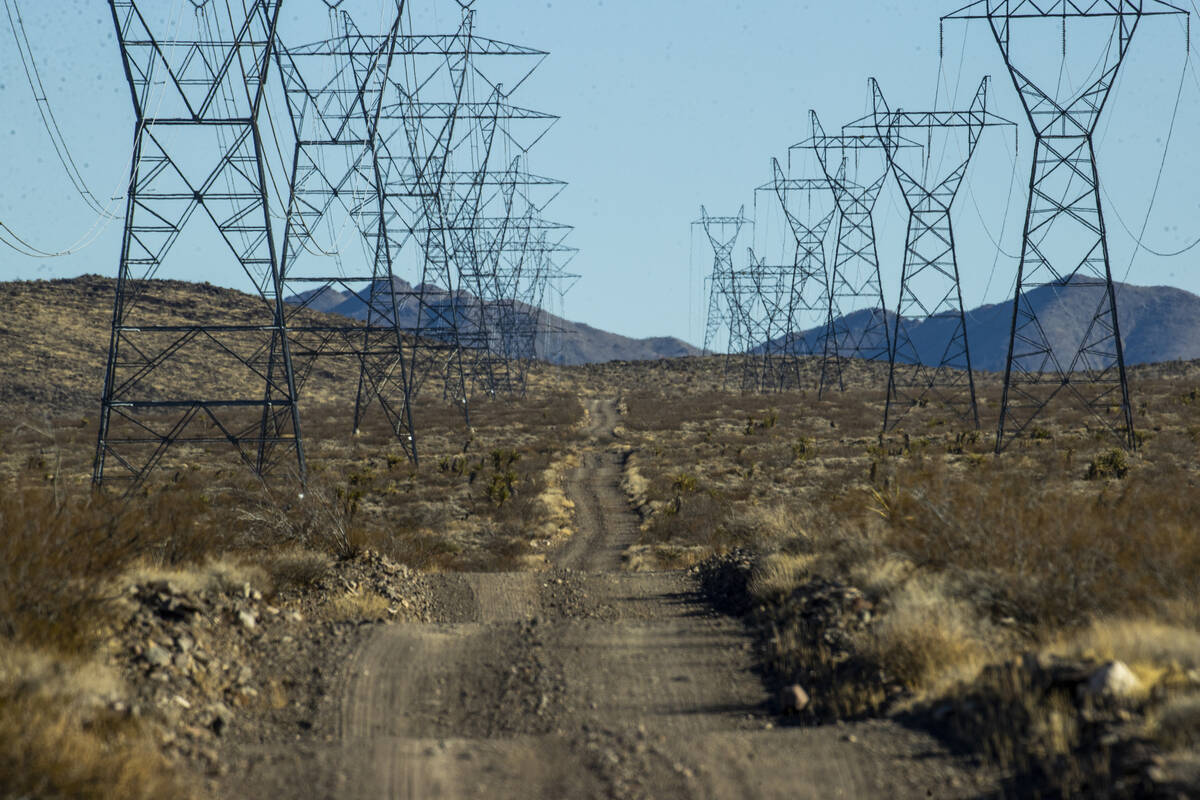National monument only 1 hurdle for proposed wind farm
Momentum is growing for permanent federal protection of a 445,000-acre swath of land near the southernmost tip of Nevada, yet a renewable energy company still wants a piece of the proposed Avi Kwa Ame National Monument.
Crescent Peak Renewables, LLC, believes that the monument, which it supports, can coexist with its Kulning Wind Energy Project, even though the proposed project has galvanized monument activists to intensify their efforts to protect the region.
“In our minds, it’s not one or the other, and it’s not us versus the conservation community,” said company spokesman Lucas Ingvoldstad, who emphasized that the project would require just 2 percent of the land currently proposed for the monument.
But the prospect of creating Clark County’s first utility-scale wind farm appears destined to be an uphill climb.
On Feb. 17, Rep. Dina Titus made good on a pledge the month earlier to introduce legislation to create the national monument, which would become Nevada’s fourth. The resolution was referred to the House Natural Resources Committee, and the nonpartisan Congressional Budget Office will determine the cost to establish the monument.
If enacted, it would prevent future renewable energy developments on the site, such as the Kulning project, because it would not allow any new easements or rights-of-way beginning on the date that the monument becomes official, according to the legislation. While existing easements or rights-of-way could still proceed, it would mean that Eolus North America, which owns Crescent Peak Renewables, would have to move quickly.
But its application, submitted a year ago, was deemed a low priority for processing by the Bureau of Land Management, which cited multiple factors for its decision, including tribal concerns and impacts to critical habitat for the desert tortoise, according to BLM spokeswoman Kirsten Cannon.
‘It’s going to be rejected’
For Neal Desai, senior director of field operations with the National Parks Conservation Association, there has never been a viable path forward to developing the area, which he said would desecrate lands important to Indigenous people and the desert ecosystem. Even without the monument designation in play, he predicted the Kulning project would fail like others before it.
“It’s going to be rejected because that’s what science and common sense would say,” he said. “But if there’s a threat, we’re obviously going to be monitoring it.”
The proposed wind farm was on the minds of monument advocates during a tour last summer of Walking Box Ranch near Searchlight, a small town some 60 miles south of Las Vegas. The wind farm would be only a few short miles from the historic ranch, they said, adding that the potential for unwanted industrial projects served only to underscore the need for permanent protection of the surrounding land.
The territory, which extends to the California border, is sacred to Indigenous tribes and it is environmentally sensitive. It contains granite mountains, dense Joshua tree forests, natural springs, cultural relics and desert animals and plants.
Taylor Patterson, executive director of Native Voters Alliance Nevada, said during the tour that tribes have had to exercise a certain level of pragmatism when faced with encroachment on acreage that is significant to their cosmology and oral tradition.
“All of this is sacred to us, but how much of this can we reasonably protect, and how much of this can we make sure doesn’t get developed?” Patterson said.
Project accounts for past criticisms
Advocates for ushering in federal protection of the region have witnessed efforts by Eolus North America to build in the area before.
The Crescent Peak Wind Energy Project, which could have included more than 200 wind turbines and covered more than 32,000 acres of public land along the Nevada-California border, was rejected by the BLM in 2018. It became an impetus for project opponents to push for monument status, however.
The BLM cited “multiple issues and concerns,” including disruption of aviation radar systems, as well as potential impacts to mining claims and the visual landscape of the area. The project was long opposed by the Fort Mojave Indian Tribe, which has been credited with spearheading the monument effort.
So Eolus North America regrouped and brought forward the Kulning project, which reflected changes in response to criticisms over Crescent Peak, according to Ingvoldstad. It is smaller in scope, with up to 68 wind turbines and, although its study area is more than 9,000 acres, the project would ultimately disturb less than 700 acres, even factoring in roads, he said.
The 308-megawatt project could generate enough clean energy to meet the needs of about 100,000 homes, create 200 to 300 construction jobs and result in more than $450 million of investment in Southern Nevada, according to the company.
Eolus North America, a subsidiary of Sweden-based developer Eolus Vind, says its project will avoid desert tortoise habitat and have “minimal” visual impacts on views.
Particularly, the company claimed that its project, under most conditions, would be barely visible in less than 10 percent of the 360-degree views from Spirit Mountain, located on the eastern boundary of the proposed monument.
Designated a traditional cultural property by the National Park Service, the mountain holds deep religious and cultural importance to Indigenous people and is the namesake for the proposed monument: The Mojave Tribe call it Avi Kwa Ame.
Surveys say
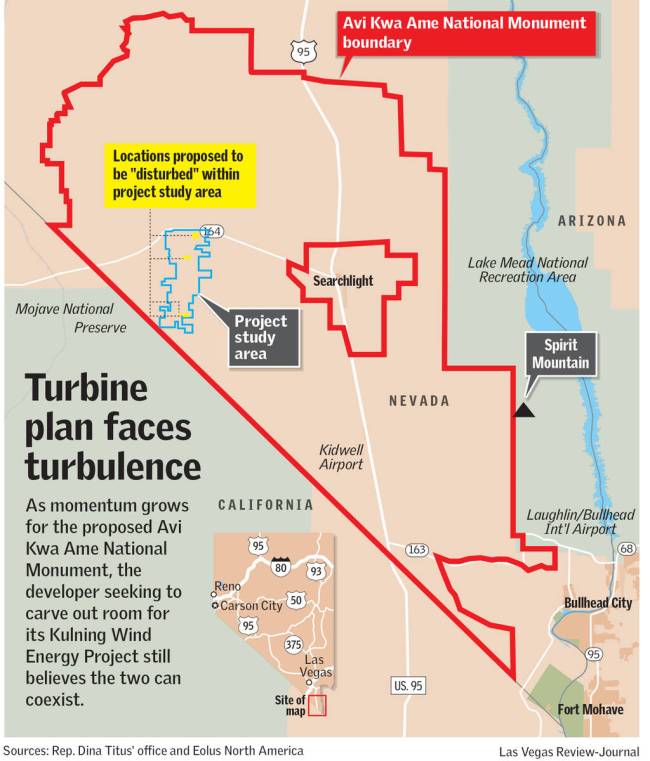
A survey of 600 voters in Clark County, conducted in October by Washington, D.C.-based firm Normington Petts, found that 72 percent supported the wind farm, compared with 69 percent who were behind the monument, when voters were given a brief description of both. Language given to respondents to describe the monument came from the website created by monument supporters, according to the polling memo.
The poll, which was commissioned by Eolus North America, also found that 56 percent of voters preferred the project over the monument when told that the project would create jobs and could help meet clean energy goals.
But polling elsewhere has indicated that the proposed Avi Kwa Ame National Monument has garnered significant support.
A poll from the Nevada Conservation League and League of Conservation Voters, released in late January, found that 70 percent of 601 likely Nevada voters supported the monument. Two-thirds of respondents maintained strong support for federal protections despite being presented with a prompt that said monuments limit renewable energy development.
The survey, conducted by Washington, D.C.-based Hart Research Associates, also showed more than half of the respondents were unconvinced by the argument that designating the land as a national monument would prevent development of needed clean energy resources in Nevada.
Broad support for monument
Third-generation Searchlight resident Kim Garrison Means said she supports green energy. But as a vocal opponent of wind farms proposed in the area by different companies over the years, she said that developers needed to be more thoughtful about prospective locations and not choose places that would obstruct scenic views or interrupt wildlife corridors.
Every failed development in recent years has only felt like a temporary victory, she said, because the next application has always been on the horizon.
“For us, it’s a problem that won’t go away,” she said.
The progressive think tank Data for Progress found that 62 percent of Nevada voters were in favor of the monument designation, which Titus cited during a news conference from the Springs Preserve in January when she vowed to introduce legislation to create it.
Beyond protecting cultural and religious resources, and the desert ecosystem, officials have said that the designation would be a boon for the outdoor tourism economy after fewer tourists visited during the pandemic.
The monument has received formal support from the Clark County Commission, Boulder City Council, and Searchlight and Laughlin town advisory boards, with each having passed a resolution in favor of its establishment.
“We are so close,” Desai said.
Contact Shea Johnson at sjohnson@reviewjournal.com or 702-383-0272. Follow @Shea_LVRJ on Twitter.



